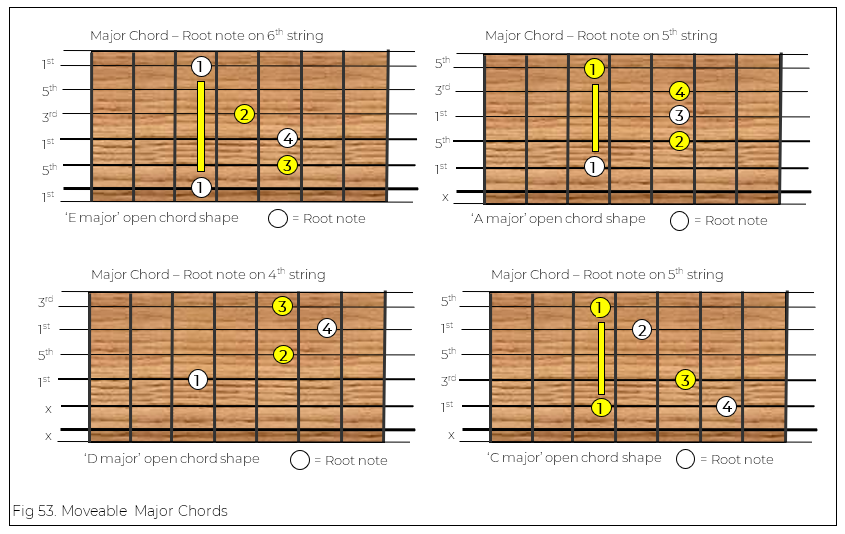So what if we want to play the chord D# major? Or Gb major? How do we achieve this?
What we do is we use the ‘open position’ chords on the previous page and move them up the neck. To do this, however, we need to turn the chords into barre chords. The barre then acts as a movable ‘nut’ to raise or lower the chord by any number of semitones.
Here are the most common movable major chord shapes on the guitar:

These shapes can be moved up and down the fingerboard to produce a major chord in any key. The root note will dictate what major chord it is. For example, if we played the ‘E major’ open chord shape at the 5th fret, we would be playing A major, since the root note on the 6th string at the 5th fret is ‘A’ (see ‘The Chromatic Scale‘).
If we wanted to play D# major, we can play the ‘E major’ open chord shape at the 11th fret, since the note on the 11th fret of the sixth string is D#.
We could also play D# using the ‘A major’ open chord shape at the 6th fret, since the note on the 6th fret of the 5th string is D#.
We could also play it using the ‘D major’ open chord shape at the 1st fret, and the ‘C major’ open chord shape with the barre on the 2nd fret.
Gb major can be achieved by playing the ‘E major’ open chord shape barred at the 2nd fret, or the ‘A major’ open chord shape barred at the 9th fret, or the ‘D major’ open chord shape at the 4th fret, or the ‘C major’ open chord shape barred at the 6th fret. These shapes, then, apply to all major chords in all keys.
So now we can play any major chord. You will see that the movable chords are just open chord shapes moved up the fretboard. You should also start to realize there are many different ways to play any one chord.